Optimized Predictions of Patient-Donor Immune Compatibility for Hematopoietic Stem Cell Transplantation
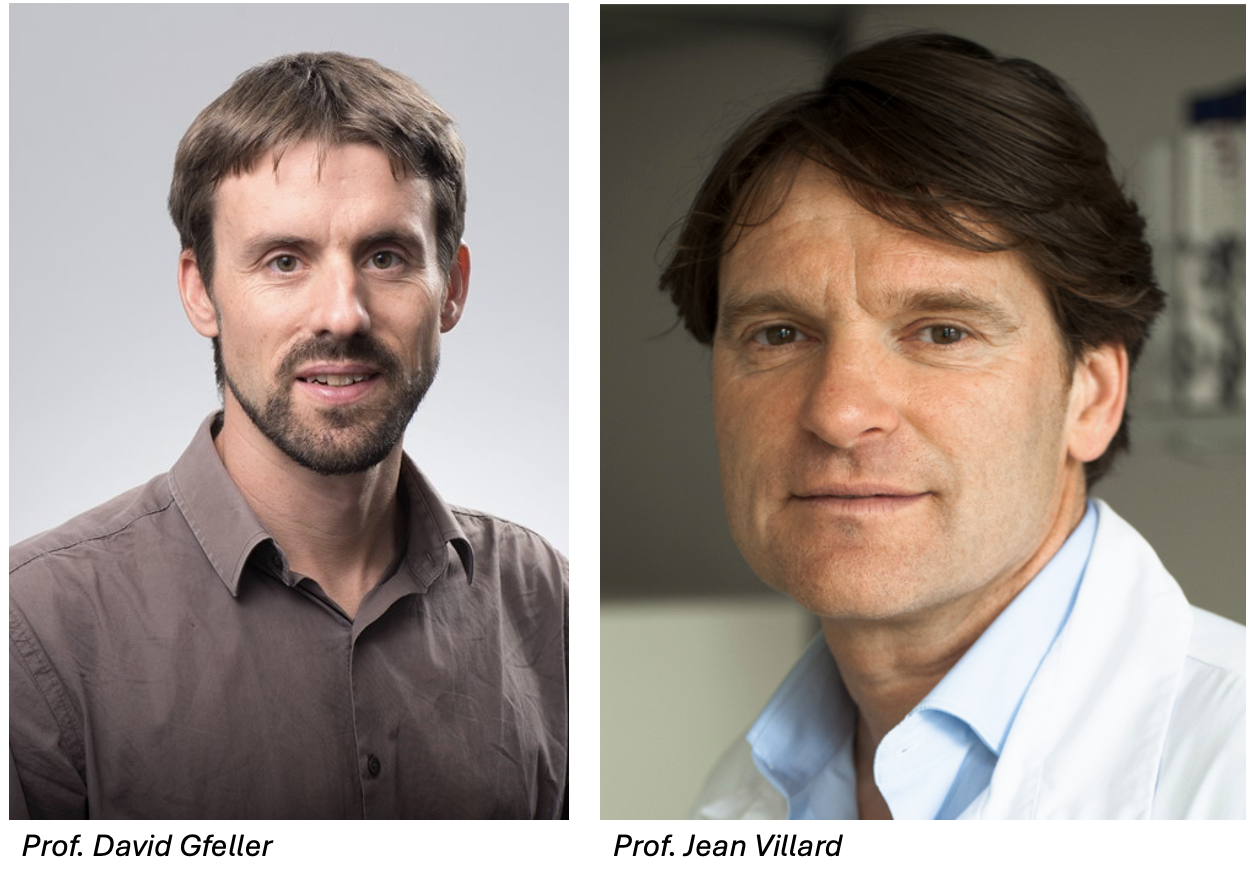
The primary goal of the project is to optimize the prediction of recipient-donor genetic compatibility for hematopoietic stem cell transplantation (HSCT) in hematological malignancies. Recipient-donor compatibility is one of the best predictors of the success of HSCT. By improving prediction accuracy, the project seeks to reduce the incidence of graft-versus-host disease and other immune-related complications. This advance could potentially increase the survival rates and quality of life for patients undergoing this common and key practice in the clinic.
Prof. Gfeller and Prof. Villard will capitalize on a combination of state-of-the-art immunopeptidomics data, machine learning algorithms and clinical data to develop their predictor of recipient-donor genetic compatibility. This model is designed to learn from past transplantation outcomes, thereby continuously improving its predictive capability. The team plans to integrate their results with current medical knowledge to develop a robust tool that can be used directly in clinical settings to assist in making more informed donor selection decisions.
Wounding as a Driver of Cancer Progression in Basal Cell Carcinoma
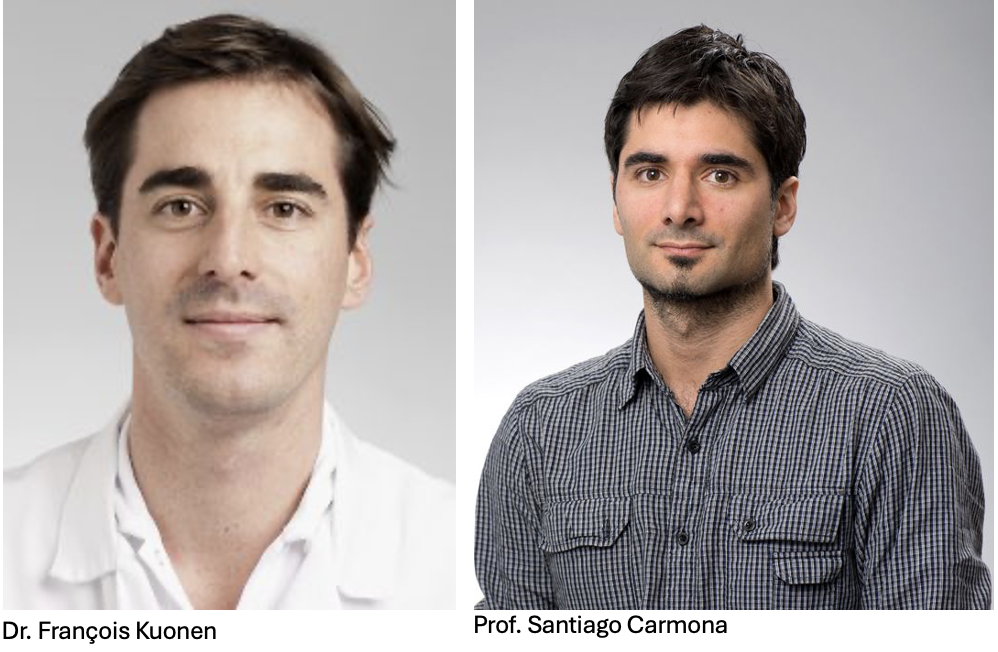
This project takes a systems biology approach to see if wounding during surgical removal is a driver of basal cell carcinoma progression, and will explore its impact on novel therapeutic interventions.
Basal cell carcinoma (BCC) is the most frequent human cancer. While most BCCs can be resected surgically, a fraction of tumors progresses to an advanced invasive stage for which effective therapies are needed. We hypothesize that wounding is a key factor promoting BCC invasive progression and that understanding this mechanism will lead to improved therapies. Here we propose to i) characterize the mechanisms by which wounding drives BCC progression in terms of cancer cell plasticity, tumor microenvironment remodeling, and cell-cell interaction circuits; and ii) identify actionable molecular targets to reverse wounding-induced BCC progression and overcome therapy resistance. To this end, the multi-disciplinary research team will combine single-cell spatial transcriptomics profiling and ex vivo culture of patient-derived tumor fragments with computational methods development.
The project has the potential to reveal fundamental mechanisms linking wounding and cancer progression with relevance in cancer types beyond BCC and to improve the outcome of patients with advanced BCC where standard-of-care therapies currently fail.
Improving treatment for colorectal cancer to prevent metastasis
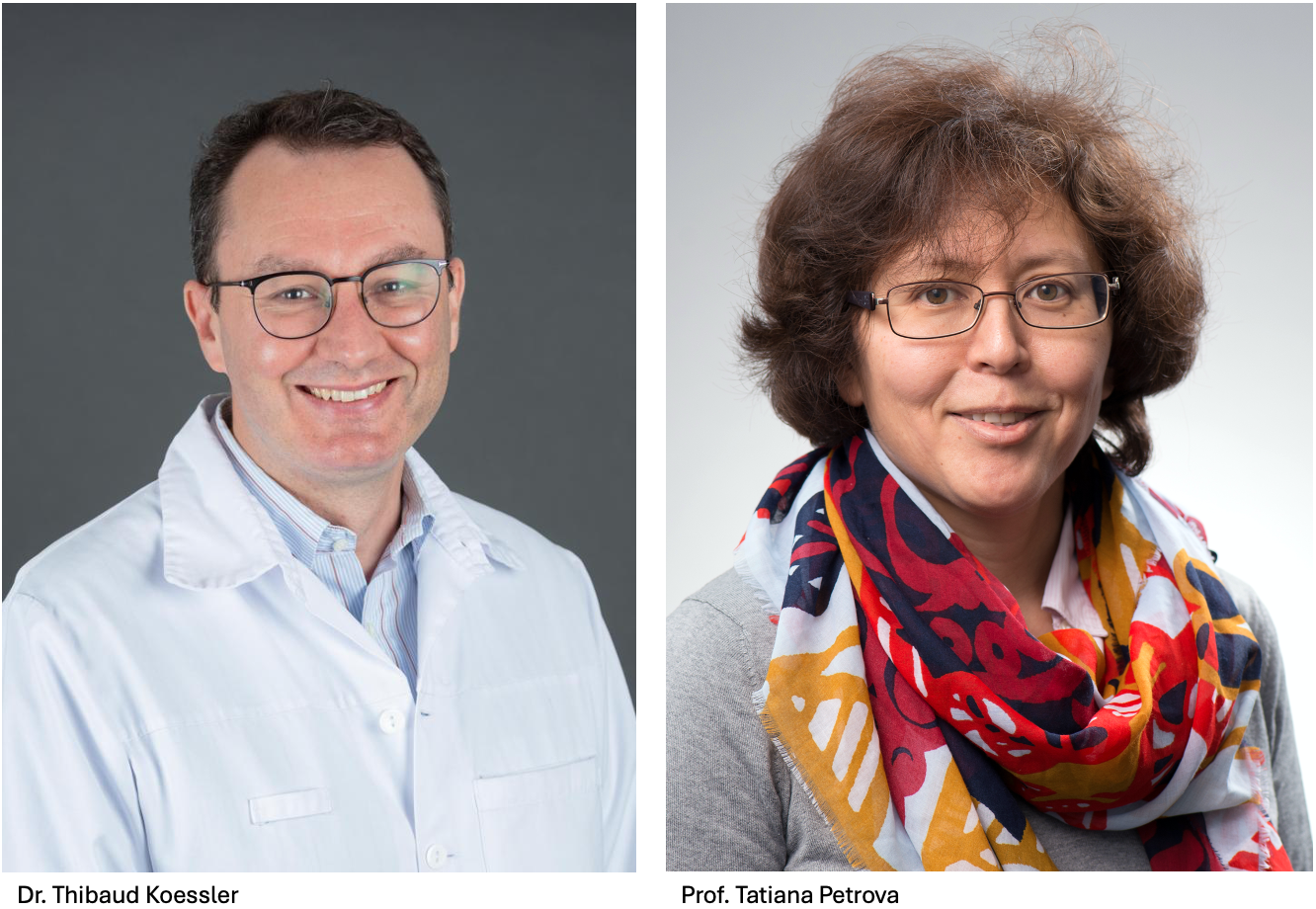
Colorectal cancer (CRC) is one of the world-leading causes of cancer-related mortality, and chemotherapy still is the mainstream treatment used for stage II and stage III CRC. The problem with chemotherapy is that in addition to killing cancer cells, it also attacks healthy tissues such as the gut and the liver. It is not yet known how chemotherapy alters the physiology and the susceptibility of these tissues. Recent research has shown that upon introduction of chemotherapy, there is a release of gut-derived bacterial metabolites. These metabolites have the ability to prevent liver metastasis by halting metastatic growth and reprogramming the immune vascular niche of the liver.
With this TANDEM project, Prof. Petrova and Dr. Koessler will collaborate to investigate the therapeutic and diagnostic potential of these findings in colorectal cancer patients. They aim to do this by analyzing the metabolites that get released in response to chemotherapy, by identifying the liver metastasis niche, and by examining the effect of the metabolites on patient-derived organoids (miniature versions of liver cultivated in vitro).
More specifically, they will:
- Profile the metabolites that are released in response to chemotherapy in CRC patients and relevant animal models.
- Characterize alterations in the liver metastasis niche in response to chemotherapy and gut microbiota components.
- Analyze how the released factors act on the growth of patient-derived organoids and metastasis formation in vivo.
This project will provide insight into how the response of organs to chemotherapy can directly influence patient outcome. The translational goal of this project is to address the current lack of biomarkers that could predict the sensitivity of chemotherapy in clinical practice. Ultimately, this could improve both diagnostic tools and therapeutic options.
Evaluation of the neoantigen-specific T cell response in pleural carcinosis managed by Pressurized Intrathoracic Hyperthermic Aerosol cisplatin Chemotherapy (PITHAC)
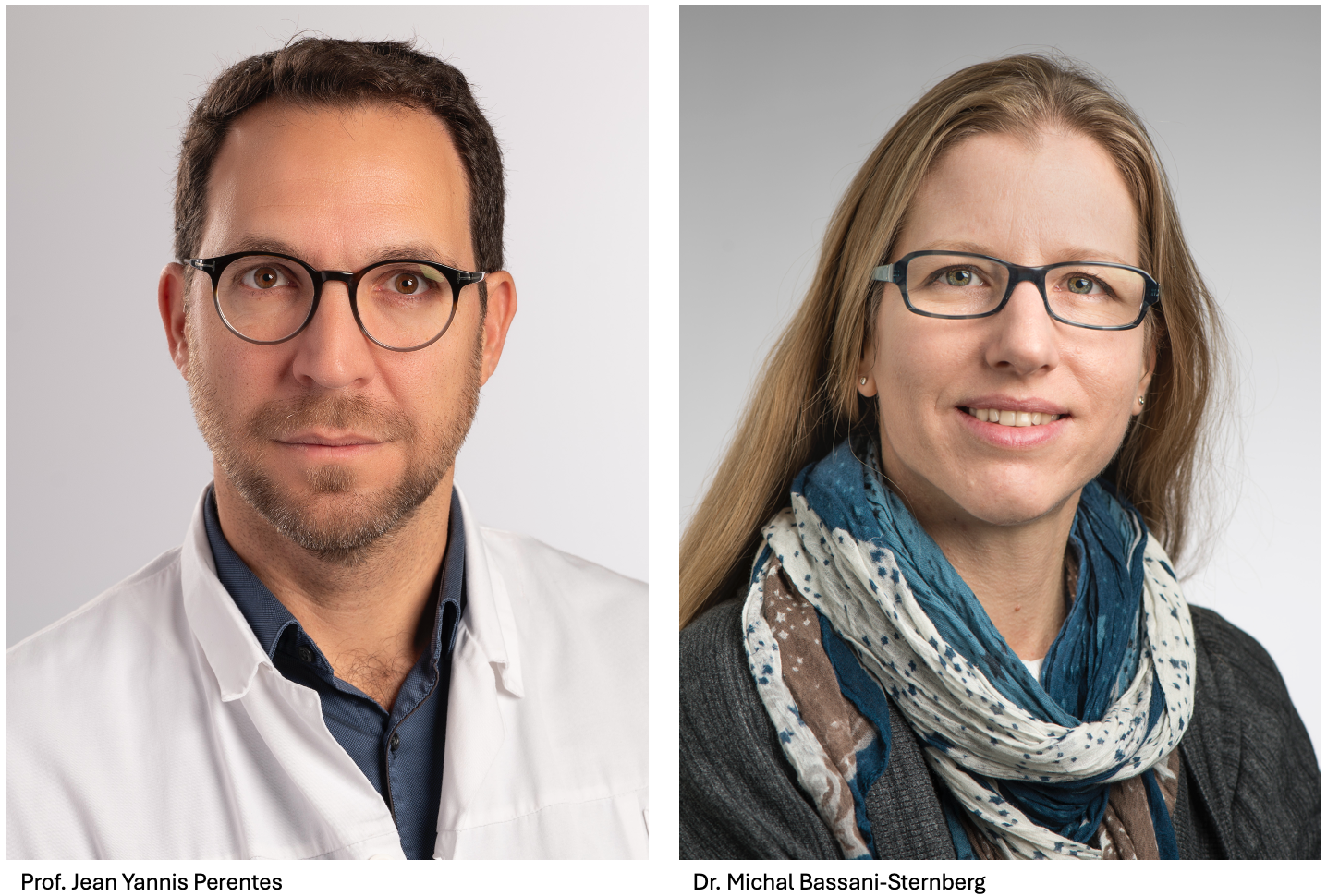
Pleural cancer occurs outside the lungs, in the cavity between the lungs and the chest wall that contains a lubricating fluid, as well as along the pleural lining, a membrane surrounding the lungs and lining the chest cavity. Cancer in the pleural cavity has usually spread from somewhere else in the body, most commonly from lung cancer, but it can also come from the breast, ovary, pancreas, colon, or other locations. Given that pleural tumors are almost always metastatic and difficult to operate, prognosis is poor. One in four patients survives five years after diagnosis of pleural carcinoma. Fortunately, the incidence is low, affecting one in 2’000 cancer patients.
A novel therapeutic approach for pleural carcinoma combines localized, pressurized drug delivery with heat-induced immune stimulation, and goes by the name of PITHAC (pressurized intrapleural hyperthermic aerosol chemotherapy). It is thought that PITHAC triggers a tumor-specific immune response, yet its efficacy in pleural carcinosis remains poorly understood.
This novel project combines a clinician with expertise in the treatment of pleural carcinosis and a biochemical protein analysis expert. The aim is to determine if PITHAC induces novel antigens on the tumor cells, which in turn trigger a neoantigen-specific response in the immune system, notably in T-cells. By determining the antigenic landscape in the tumors of patients with pleural carcinosis, this study will determine if the mode of action of PITHAC includes the induction of a protective neoantigen-specific T-cell response. If so, it would then be reasonable to combine PITHAC with immunotherapies to make them more efficacious.
The researchers will apply this analysis to the patients enrolled in a Phase I clinical trial that started in 2023 at the CHUV. The trial will assess the feasibility and toxicity of PITHAC in pleural carcinosis patients, and during this trial blood and pleural fluid samples will be collected (after surgery and periodically for a month). The TANDEM grant will finance the analysis of these samples.
The novelty of this project is its longitudinal antigen discovery study, comparing patients before and after therapy, potentially facilitating the integration of PITHAC with immune checkpoint blockade inhibitors and enhancing the study’s translational impact.
Immunotherapy in malignant pleural mesothelioma

Primary pleural cancers such as the malignant pleural mesothelioma, a lung cancer related to asbestos exposure, are cancers that develop in the chest cavity. Mesothelioma is a devastating cancer of high unmet medical need, and its heterogeneous response to immune checkpoint blockade is the rate-limiting factor for improved treatment.
The project led by Profs. Peng and Ochsenbein and Dr. Schmid aims to discover novel immune targets and mechanisms of resistance to immunotherapy in mesothelioma patients. The work builds upon the present state of understanding of mesothelioma treatment, and by determining the variables that correlate with patient response, this study will pave the way for future innovative therapies.
Making use of a large cohort of 109 malignant pleural mesothelioma patients, they will identify the molecular and cellular determinants that correlate with a response to treatments that unblock the patient’s immune response against the tumor. They will use state-of-the-art molecular technologies that visualize the gene expression patterns in the cancer and in the surrounding tissues, cell by cell.
They hope to identify signatures that distinguish responsive from nonresponsive tumors. They will then compare the signature across sections of malignant pleural mesothelioma to determine the effects of the treatments on tumor cell behavior, examining not only the tumor but also the immune cell response to the treatment. To confirm what they will have learned from patient samples, they will then use mouse models of the disease, applying various inhibitors to the mice bearing human mesothelioma. Finally, they will combine immune checkpoint inhibitor therapies with effective inhibitors of growth, both in mouse models and eventually in patients.
The goal is to improve treatments against this devasting disease.
Improving the efficiency of immunotherapy for acute myeloid leukemia

Acute myeloid leukemia (AML) is a cancer that starts in the blood-forming cells of the blood marrow, and which results in the rapid death of the patient if left untreated. Formerly, treatment was based on chemotherapy followed by a hematopoietic stem cell transplantation. More recently, immunotherapy, which programs killer T-cells to attack the cancer cells, has been attempted. Unfortunately, even after intensive and aggressive treatments, a large portion of patients still relapse, and immunotherapy tends to attack healthy as well as leukemic cells. New, innovative treatments and approaches for AML are an urgent unmet clinical need.
To date, the search for AML-specific targets for targeting by cancer-killing CAR-T immune cells, has been unsuccessful. The scientists in this project are now trying a different approach by reversing the therapeutic concept. Their primary goal is now a complete eradication of the disease, including the leukemic stem cells (LSC), while protecting healthy hematopoietic stem cells from the immunotherapeutic attack. This should prevent relapse and overall improve patient outcome.
The TANDEM team, consisting of Prof. Jeker and Prof. Holbro, will investigate a potential “cloaking mechanism” that can be used to shield healthy hematopoietic stem cells from the agents that are used to kill the cancer cells. To do this, the scientists need a cell marker (cell surface protein) that is present on both the healthy and the cancer cells, and which they can modify genetically on the hematopoietic stem cells taken from the patient. The protected hematopoietic stem cells will then be re-introduced after AML therapy to regenerate the bone marrow, providing the altered protein does not prevent the cells from functioning normally. The AML-directed immunotherapy will be introduced into the patient and will only recognize the targeted marker on the cancer cells, since the healthy cells carry an altered or mutated marker. This could favor recovery, prevent relapse and improve efficacy of AML treatment.
Immunotherapy for sarcoma treatment

Sarcoma defines an uncommon group of cancers which arise in bones and connective tissue such as fat and muscle. In most cases, it is not clear what causes sarcoma, although family history and exposure to chemicals or radiation may increase risk. There are many types of sarcomas, many being particularly prevalent in pediatric patients, and symptoms depend on tumor type and location.
Current treatments are primarily surgery, radiation, and chemotherapy, yet these offer limited success, especially for advanced cases. There have been some promising results with targeted therapies, but unfortunately, responses are often short-lived. Moreover, immunotherapy, particularly chimeric antigen receptor (CAR) T-cell therapy, presents challenges due to the suppressive tumor microenvironment.
Dr. Digklia and Dr. Irving aim to address the limitations of current sarcoma treatments through a multidisciplinary approach. This will require them to deepen their understanding of sarcoma tumor characteristics, in order to subsequently design and create novel CAR-T cells tailored to sarcoma, and to test ways to enhance their efficacy.
Specifically, this team composed of one clinician and one basic scientist will:
- Characterize sarcoma biopsies from patients at the Sarcoma Center of the CHUV to understand the molecular source of tyrosine kinase inhibitor (TKI) resistance and the barriers to CAR-T cell therapy.
- Develop and engineer new CAR-T cells, targeting specific antigens (B7H3, GD2, and EphA2) for reactivity against sarcoma tissue, based on biopsies and cell lines.
- Optimize combinatorial CAR-T cell therapies for clinical translation, making use of TKIs or other drugs to enhance CAR-T efficacy.
Overall, the goal is to design new, effective treatments for sarcomas, and to test next-generation CAR-T cells that are designed based on their in vitro/in situ results. The scientists will genetically engineer new receptors for CAR-T cells and use their analysis to design new stratification tools for the tumors. Besides CAR-T engineering, they will also analyze the non-cancer tissue surrounding the tumor, to improve the CAR-T cells’ access to the tumor.
The proposed CAR-T targets are well-established and have been used in neuroblastoma, but here the scientists focus on a rare tumor of connective tissue origin, with a persistently bad prognosis. The project is innovative, meets unmet needs and displays a highly collaborative translational aspect with potential to improve the lives of patients living with untreatable sarcoma.
Exploring the anti-tumor functions of immune cells in bladder cancer
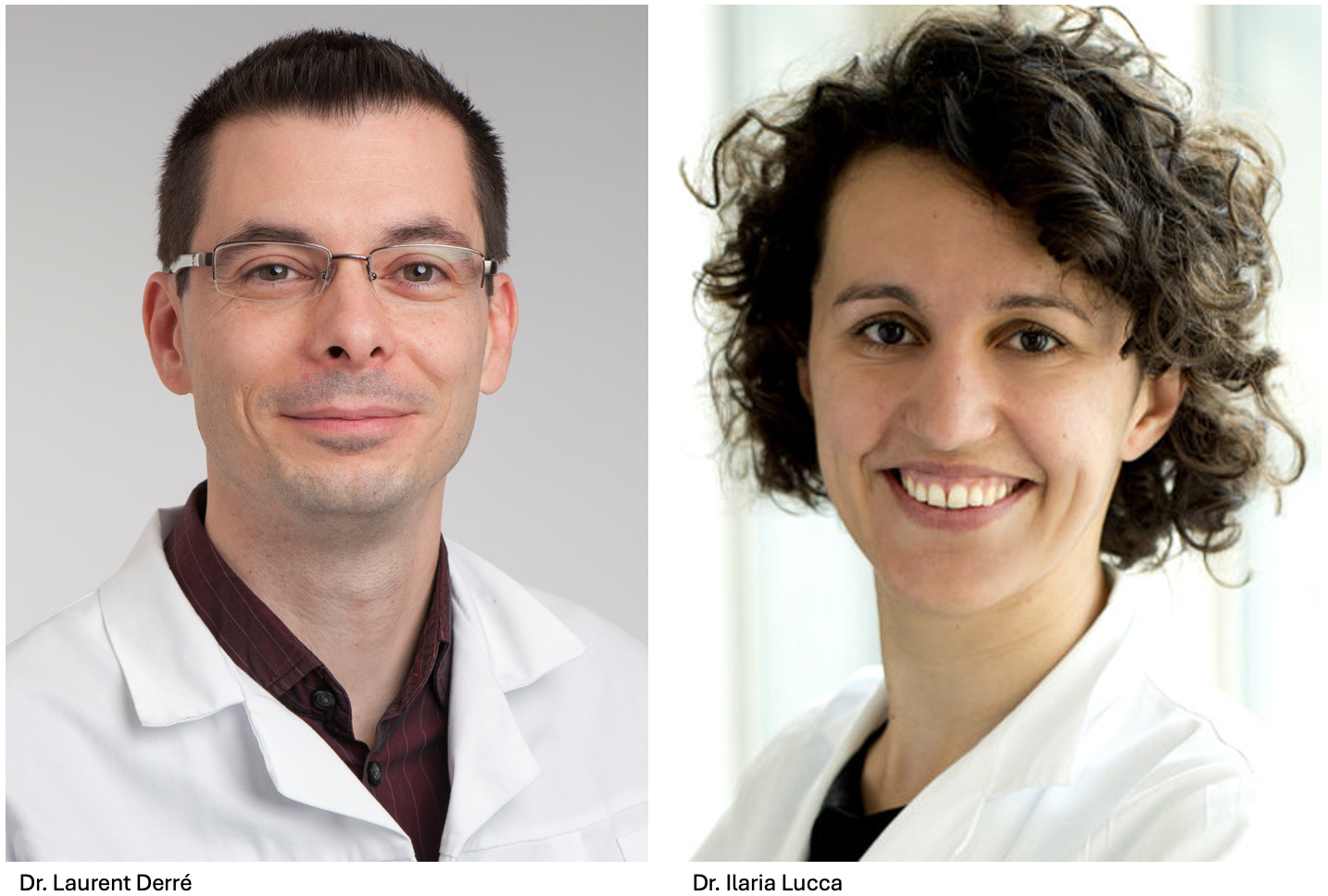
Bladder cancer (BCa) is a major health concern, causing approximately 1’400 deaths every year in Switzerland alone. In comparison to prostate cancer, for which recent advances have increased the 5-year survival rates significantly, progress on bladder cancer has stalled. BCa are classified according to how invasive the tumor is at the time of the initial diagnosis. Tumor recurrence is frequent, even when the patient was initially categorized as low risk. For medium- and high-risk patients, it is even worse, as their tumors frequently progress to a muscle-invasive state that requires cystectomy (removal of the bladder). A major challenge is to prevent an initially non-invasive bladder cancer from progressing to muscle invasive disease, which has a much worse prognosis.
So far, the therapeutic approach most commonly used is an intravesical therapy. In this procedure, an immune stimulating agent (such as the Bacillus Calmette-Guerin inoculum (BCG)) is introduced into the bladder to prevent or at least delay tumor recurrence and/or growth. Unfortunately, about 20 to 30% of all patients discontinue the treatment due to severe side effects. Also, it has been shown that even when treated, 20% of all patients experience early recurrence, and only about 45% remain cancer-free for five years. There is an urgent need to find new prognostic tools to identify patients at risk for BCG failure and to predict tumor recurrence/progression. More robust prediction tools may be able to improve the patient’s life quality.
This TANDEM project aims to explore the potential of Vẟ2 T cells (a subtype of T lymphocytes) in this respect. These cells are a subgroup of T cells that infiltrate tumors (called tumor-infiltrating lymphocytes). Recent research has shown that they have the ability to control tumor growth in mice. It remains to be shown that this is relevant to humans, which is why more research using human samples is needed. Specifically, this project will unveil the Vẟ2 T transcriptomic landscape at the single cell level, with the hope that it can serve to identify new biomarkers and allow for the development of new treatments for BCa.
New biomarkers from lymph nodes for programming immunotherapy against triple-negative breast cancer

Breast cancer (BC) remains one of the leading causes of death among women, and 80% of breast cancer deaths are caused by metastatic disease. The majority of these deaths occur in hormone receptor positive patients (HR+), which constitute 80% of all diagnosed breast cancers. In these tumors, the hormone estrogen signals through its receptor to drive tumor growth. Anti-hormone therapy, also called endocrine therapy, which blocks estrogen receptor signalling activity, is the standard treatment for these tumors. Unfortunately, resistance to this therapy increases over time and nearly all HR+ BC patients become refractory to endocrine therapy, generating a large unmet clinical need for new ways to treat HR+ BC patients.
This TANDEM study addresses this urgent unmet need by aiming to identify predictive biomarkers for therapy guidance and patient selection for immunotherapy against HR+ BC. Immunotherapy represents a paradigm shift in the treatment protocols for BC. Yet, to date, it has had little efficacy against recurrent and metastatic BC.
The approaches used in the past to characterize immune therapy-related biomarkers have focused only on the tumor, and no one has checked if promising markers for immune checkpoint therapy can be detected in nearby tissues. This project will investigate the potential of identifying immunological markers in tumor-draining lymph nodes (TDLN). TDLN are the first sites at which the immune system encounters tumor antigens, and these lymph nodes help orchestrate the anti-tumor adaptive immune response. In short, this project is based on the hypothesis that biomarkers found in the TDLN at the early stages of the disease may be more effective for programming and predicting responsive immune cells.
The ultimate aim of the project is to find biomarkers in the lymph nodes near HR+ breast tumors that can indicate sensitivity or resistance to immunotherapy.
Analyzing the role of the tumor microenvironment in platinum drug-resistant ovarian cancer
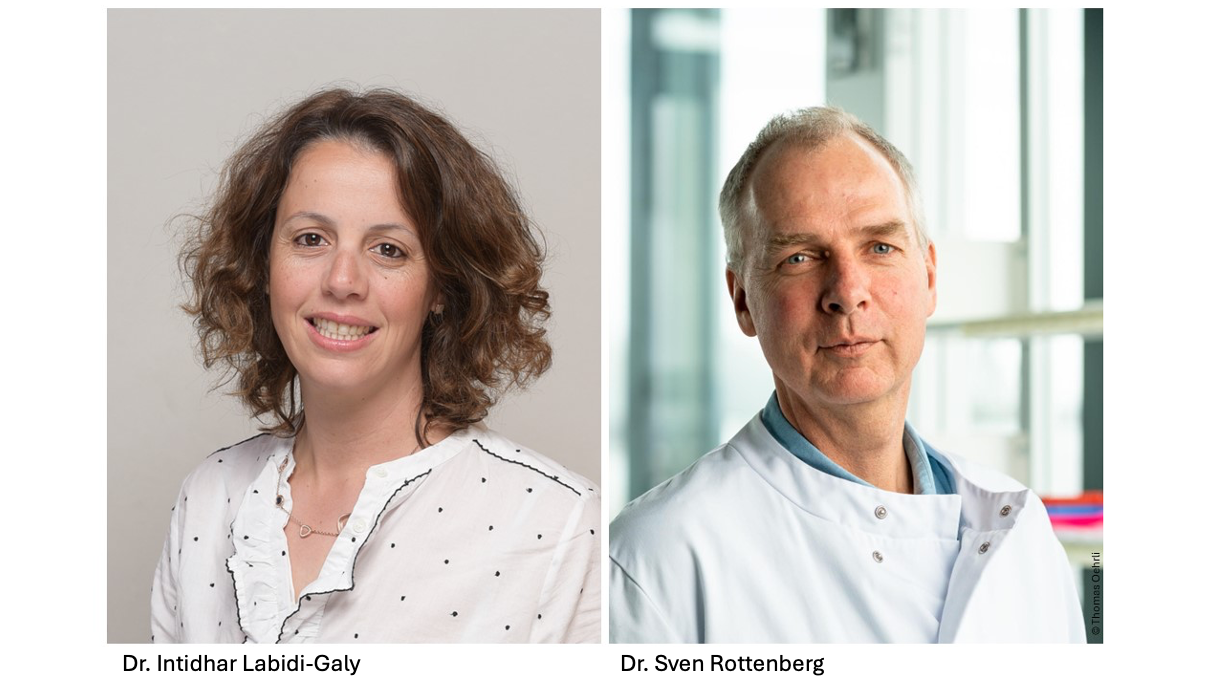
High grade serous ovarian carcinoma (HGSOC) is the deadliest gynaecological cancer, with a median survival rate of 3 years. Standard treatment involves surgery followed by chemotherapy, typically using platinum and taxane agents. While chemotherapy frequently works well initially to shrink tumors, most women later develop platinum-resistant tumors, that are often fatal. This TANDEM project aims to understand the underlying factor of this resistance, in order to improve immunotherapeutic approaches and develop more effective treatments.
Treatment of HGSOC is a major clinical hurdle, not only because of the commonly developed resistance to chemotherapy, but also due to the fact that it does not respond to recently discovered therapies such as immune checkpoint and targeted T-cell therapies. The reasons for its chemotherapy resistance and insensitivity to immune checkpoint therapy remain unclear.
In this project, the team uses a unique set of patient-derived samples that were collected after resistance had developed and applies cutting-edge molecular technologies to analyze the spatial distribution of cellular and subcellular compartments. Through this, they aim to understand the disease heterogeneity and pinpoint changes that result in resistance.
Preliminary data suggest that platinum-resistant HGSOC is characterized by the accumulation of immune cells called tumor-associated macrophages. These cells are the most common cells in the tumor microenvironment and play a vital role in cancer survival and progression. Leveraging imaging and sequencing tools, the team will identify cell types responsible for resistance, and will gain insight into the spatial distribution and status of the tumor associated macrophages. In this way, they hope to decipher the role these macrophages play in the platinum resistance of HGSOC. Ultimately, these results may lead to an improvement of immunotherapeutic approaches, specifically in the case of platinum-resistant HGSOC.

